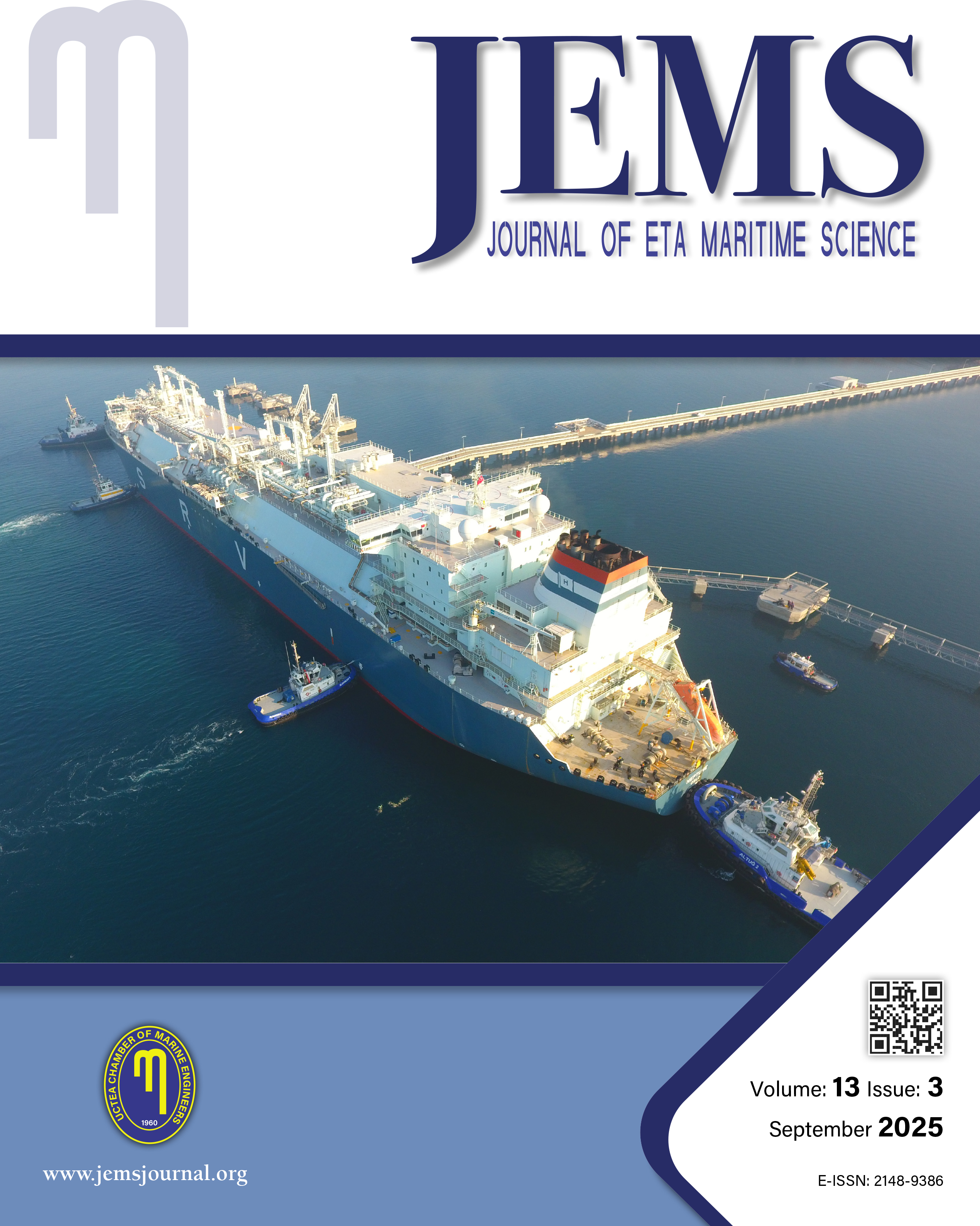

JEMS apply the Creative Commons Attribution NonCommercial 4.0 International Licence to all manuscripts to be published
Frequency-Domain Ship Motion Code with Python Programming Language
Seyyit Nafiz Arslan1, Atakan Yavuz1, Ferdi Çakıcı21Military Factory and Shipyard Management Inc., Ankara, Turkey2Yıldız Technical University, Department of Naval Architecture and Marine Engineering, İstanbul, Turkey
In this study, a frequency-domain seakeeping code is established. A container ship was selected as an example to demonstrate the outputs of the code in different headings, ranging from the beam to head waves. Tasais method is used to obtain two-dimensional hydrodynamic added mass and damping coefficients. For different loading conditions, the damping values for the roll motion can be obtained using Ikedas method. Froude Krylov and Diffraction terms for pitch and heave motions are computed using the head seas approximation. A user-friendly interface is designed for presenting frequency-domain analyses. Vertical motions, vertical accelerations, and some derived motion characteristics, such as deck wetness, slamming, and absolute vertical accelerations are plotted as transfer functions. The entire procedure is implemented using Python code.
Keywords: Seakeeping code, Tasais method, Derived motions, Ikedas methodManuscript Language: English
(768 downloaded)










